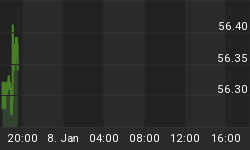The fundamental drivers behind stock gains on Thursday morning came in the form of U.S. jobless claims falling to a four-year low and improving bond action in Europe. Despite today's headlines, insiders and waning bullish momentum are still waving caution flags.
Insiders Are Net Sellers
Insiders, or the people who run major corporations, tell us to be selective with cash. According to MarketWatch:
Consider an index of insider behavior calculated by the Vickers Weekly Insider Report, published by Argus Research, which is based on the ratio of shares sold by insiders to shares bought. Last week, according to the latest issue of the Vickers service, this ratio for NYSE-listed issues stood at 5.13-to-1. o put these numbers into perspective, bear in mind that the sell-to-buy ratio's long-term average is between 2-to-1 and 2.5-to-1. Vickers consider any ratio below this average to be bullish, and any number above it -- like the current level -- to be bearish.
Bullish Momentum Has Not Been Reestablished Yet
The rapid deterioration in bullish momentum that occurred between Friday afternoon and Wednesday's close has not been reversed in a meaningful way yet. While the "risk-on" (SPY) vs. "risk-off" (IEF) chart below (stocks/bonds) is still trying to hold at support, the indicators still look similar to the pre-correction period in April/May 2012. We outlined similar concerns on May 7. The S&P 500 dropped 103 points after we posted the May 7 warning.

Downtrends consist of lower highs and lower lows. In early October, the S&P 500 failed to exceed the late September high. A meaningful lower low would occur if the S&P 500 closed below 1,431, which would increase our heightened sense of alert concerning increasing odds of further corrective activity. A clear break above 1,447 (point C) followed by a close above 1,462 (near B) would assist in removing our bearish concerns.

From a pure support perspective, the S&P 500 is holding Thursday at a logical level (see green arrows below). Overhead resistance sits between 1,443 and 1,447.

We are net long currently by a wide margin, which tells you we believe higher highs are due before year-end. However, we added a hedge (PSQ) earlier this week after seeing bearish set-ups in technology stocks. With maximum flexibility and an open mind, we can maintain our net bullish stance or migrate further toward a defensive stance. If we pay attention, the markets will help us navigate through these indecisive waters.
















